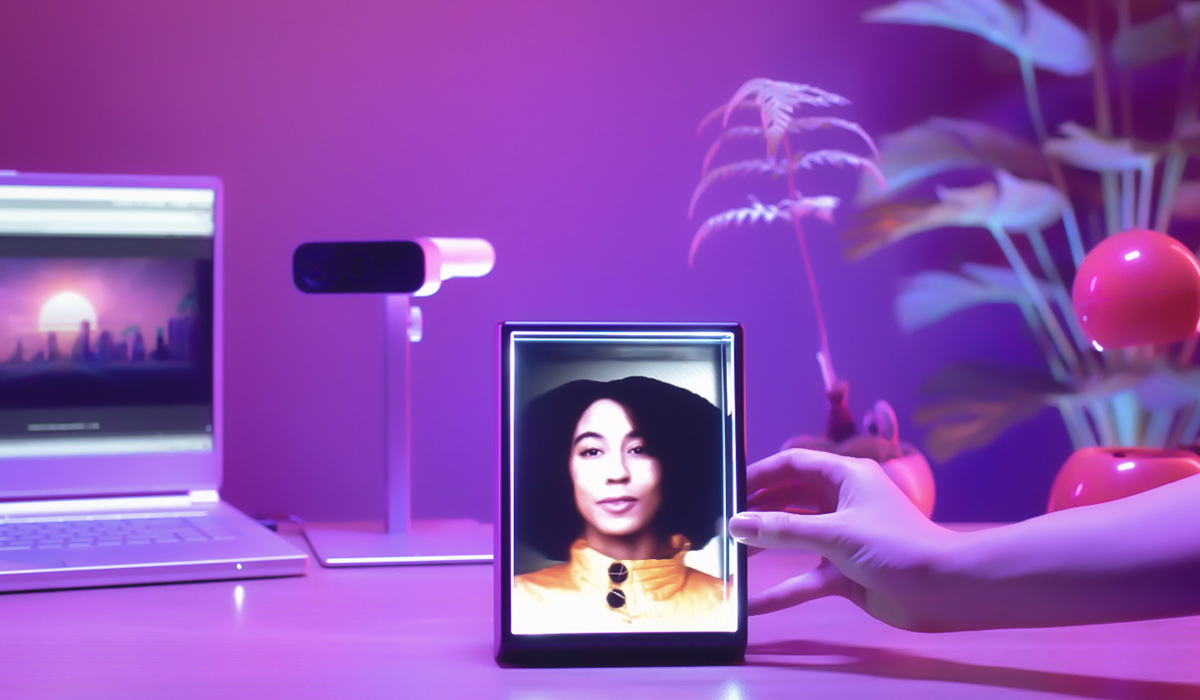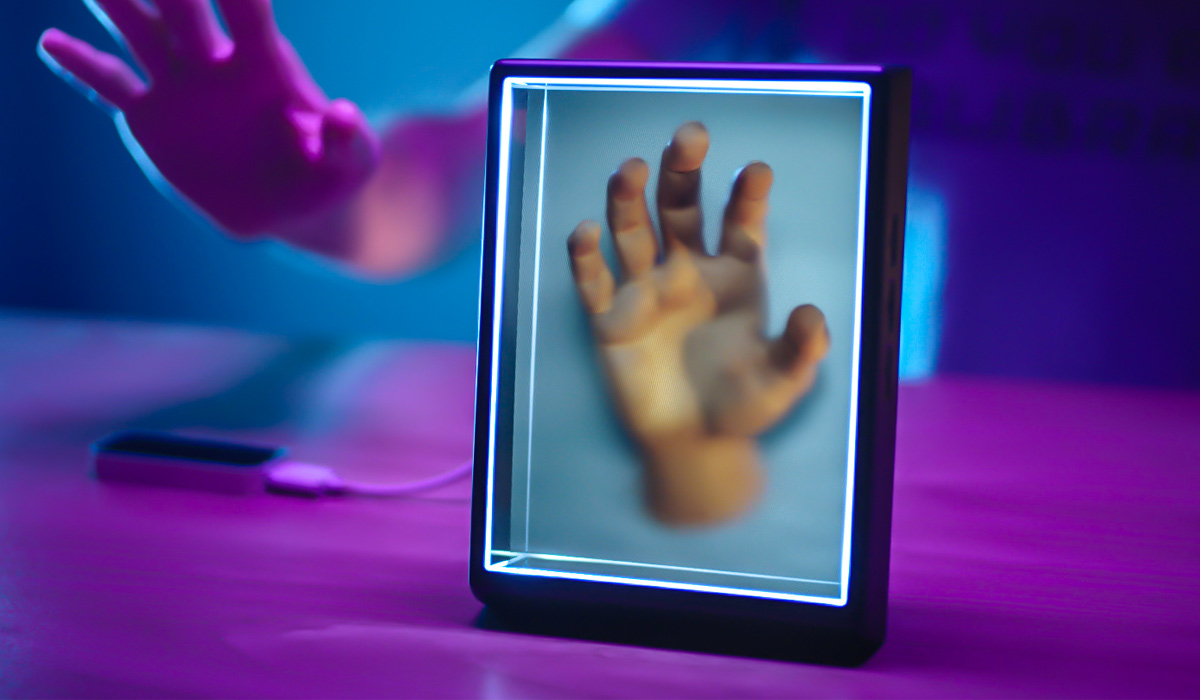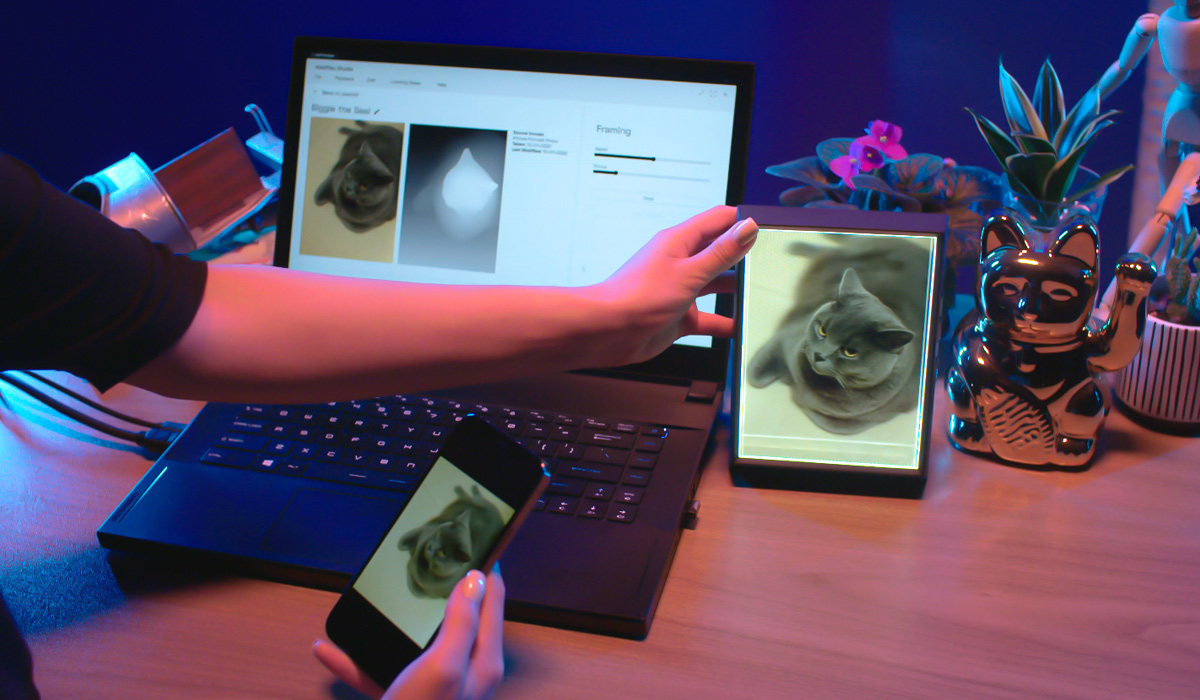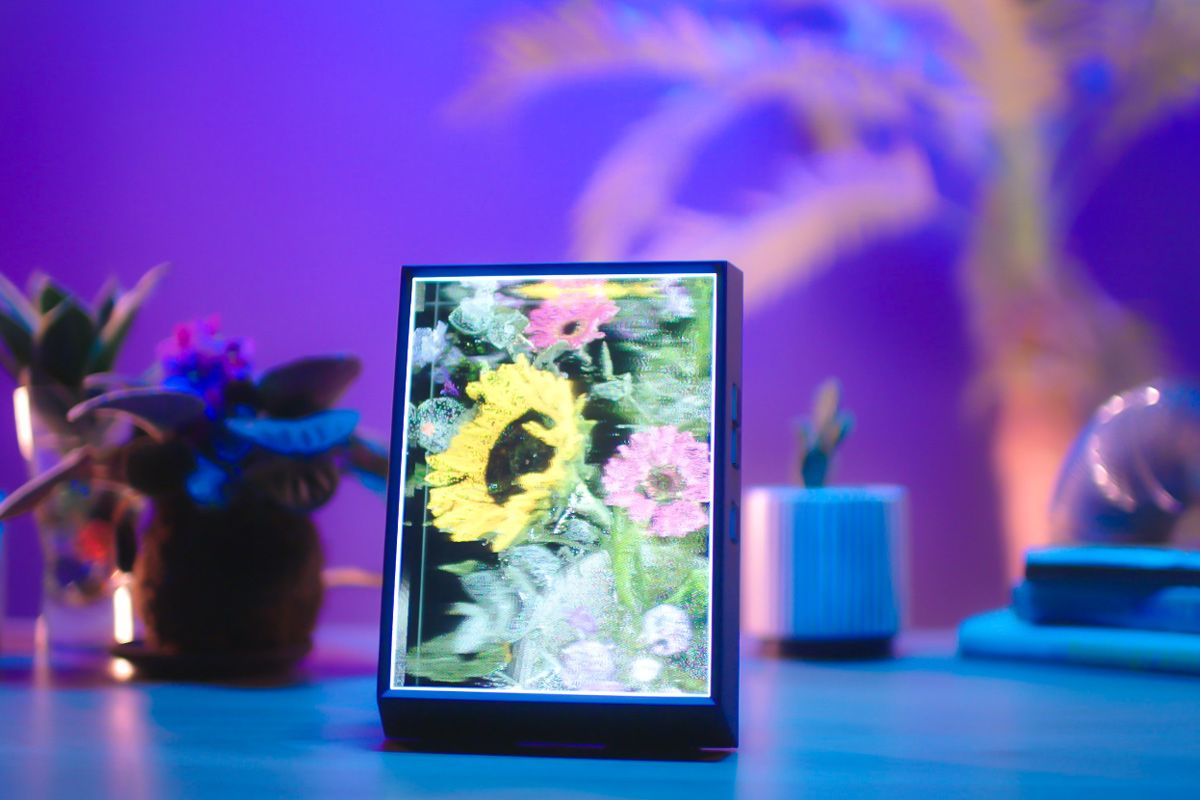Hologram portrait technology has been around for a while — baseball cards were doing a version of it in the early nineties, and Kanye West commissioned a hologram of Kim Kardashians’s dead father for her 40th birthday (as a side note, Kanye programmed the hologram to call him “the most, most, most, most, most genius man in the whole world” — so the whole thing went down about like you’d expect).
But you don’t have to be a Kardashian (or the most, most, most, most, most genius man in the whole world) to enjoy hologram tech thanks to the Looking Glass Portrait — a new piece of tech currently raising funds on Kickstarter. The device allows you to turn any photo with depth information (read: portrait mode) into a lifelike hologram that sits on your home office desk.

How to Create Your Hologram Portrait
The Looking Glass Portrait is about the size and shape of a shoebox and fits nicely on a desk, shelf, or anywhere else you’d put a picture frame. To create your very own hologram, all you have to do is take a photo in Portrait Mode with your iPhone (and some Androids). Portrait mode photos contain depth information, which the Looking Glass Portrait then uses to create lifelike three-dimensional holograms.
Once you’ve uploaded your photo to the pc/Mac compatible HoloPlay Studio software (included), the software automatically converts the data into a hologram and stores it on the Looking Glass Portrait so you can display your futuristic portrait anywhere, anytime!
Taking it Up a Notch with Light Field Photos
If you want to take your holographic creations to the next level, tap into the incredible capabilities of the Looking Glass Portrait to create light field photos. Switch to Panorama mode on your phone, capture an image, then upload it into the HoloPlay Studio. The additional data makes an even more detailed and convincing hologram!

The Looking Glass Portrait’s Interactive Applications
What makes the Looking Glass Portrait unique (in our opinion) is its capability to function as an interactive tool for creatives of all types. When used in Desktop mode, Looking Glass Portrait can interface with 3D creation software like Unity, Unreal, Blender, and Maya. That means 3D artists and animators can render a character or landscape into the Looking Glass Portrait to get an in-depth look at their creation. If we were in that position, we’d use the technology as a proof-of-concept tool. Nothing wows like a hologram; showing your character design in holographic 3D space might be a good way to convince a stubborn executive that you are right and they are wrong about the design choice in question.
The Looking Glass Portrait can also run the experimental Azure Kinect recording application to capture and display motion in real-time. We don’t know what you’d use it for, but we suspect it would be fun!
Desktop Requirements
Any PC or Mac with HDMI and USB-C ports will interface with the Looking Glass Portrait. You’ll need a graphics card like the GTX 1650 (or equivalent), an Intel i5 chip or higher, and 8 or more GB of RAM.

Kickstarting the Hologram Portrait
The Looking Glass Portrait will retail for $349, but a campaign special will get one on your desk for $249 and includes all the software needed to run the advanced applications and produce your own hologram portraits. The product will ship anywhere in the world and is expected for delivery in April 2021. Hurry up if you want one — only 84 of the original 1,000 are still available.



